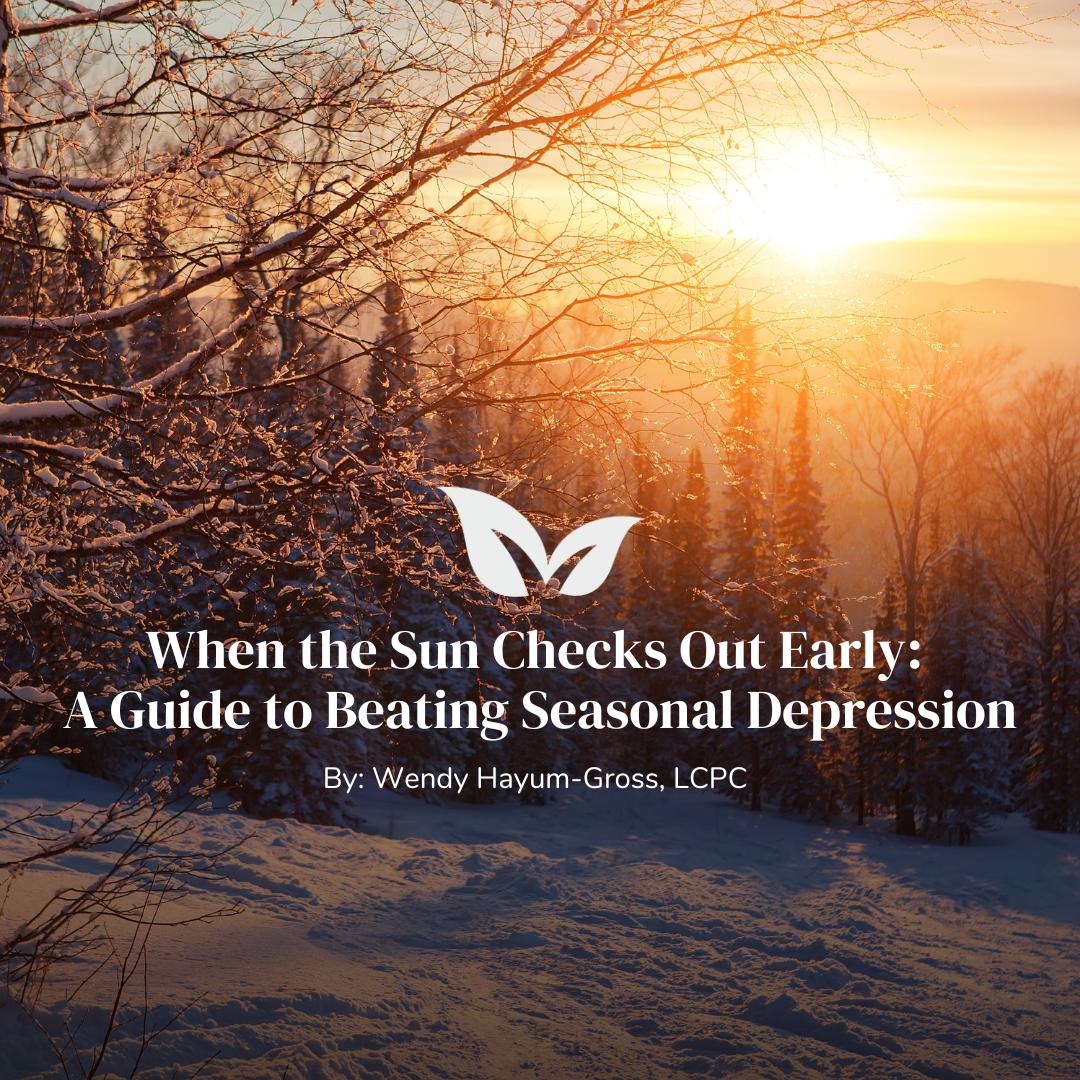


Ah, Daylight Saving Time—because what we all needed was less sunlight and more confusion about how to change our microwave clock. As the days get shorter and it starts feeling like midnight at 5:00 p.m., many of us find our mood dropping right along with the sun. Enter: Seasonal Affective Disorder (SAD)—the aptly named seasonal slump that makes us want to hibernate with pj’s, fuzzy socks, Netflix, and a family-sized bag of chips.
But don’t worry—there’s hope (and it’s not just in the form of stronger coffee). Let’s talk about how to fight back against the winter blahs—with a touch of humor and a dose of science.
Why Does Seasonal Depression Happen?
Think of your brain as a solar-powered houseplant. When there’s less sunlight, your “batteries” run low, your mood droops, and suddenly you’re crying because your favorite soup is out of stock. Science tells us this is partly due to dips in serotonin (our “feel-good” chemical) and melatonin (the sleep regulator)—basically, our brain’s internal clock gets confused and cranky.
To make matters worse, our culture, and well yes, our employers too tells us we have to continue on at the same pace 365 days a year. Remember bears hibernate, birds fly south and Nordic countries embrace the seasonal change and don’t waste precious energy fighting it.
1. Chase the Light (Literally)
Try a light therapy lamp—basically, a “sun in a box.” Sitting by it for 20–30 minutes in the morning can help trick your brain into thinking it’s sunny and glorious outside.
2. Bundle Up and Go Outside
Yes, it’s cold. Yes, your nose hairs might freeze. But even 15 minutes of daylight can give your mood a much-needed boost. Not only does it signal your brain to get going, it helps with Vitamin D which also slumps this time of year. Bonus points if you find a squirrel to wave at—it’s an instant serotonin hit.
3. Move Your Body (Even If It’s Just a Wiggle)
Exercise helps release endorphins, but don’t pressure yourself to run a marathon. Dance in your kitchen, do some stretches in pajamas, or walk laps around Target (hey, it counts).
4. Eat the Rainbow
Winter makes us crave carbs like raccoons at a donut shop. Comfort food is fine (mac and cheese, we still love you), but mix in fruits, veggies, and omega-3-rich snacks to keep your brain happy too. Thanks Nicki Anderson for teaching me this ages ago!
5. Social Sunshine
Spend time with friends and loved ones, even if it’s just a quick coffee chat or a FaceTime call. Human connection is like emotional Vitamin D.
6. Embrace Cozy Rituals
Create joy in the small things. Light candles, read that book you keep ignoring, or wrap yourself in a blanket cape and declare yourself ruler of the living room.
7. Talk It Out
If your seasonal sadness feels heavier than a snowdrift, consider talking to a therapist. Mental health support isn’t just for “big” problems—it’s also for the everyday struggles that pile up in the winter.
A Note on the Time Change
Yes, the time change is annoying. But here’s a reframe: it’s basically permission to drink hot cocoa at 4:30 p.m. without guilt and to put on pajamas before dinner. Small wins count. Remember to lean into all that this season offers instead of wishing it away – there is joy in every season if we allow ourselves to see it.
If you or a loved one is struggling with the impact of seasonal depression, our passionate team of counselors and therapists are eager to help! Contact us today to learn more about how we can support you.
References
Blumenthal, J. A., Babyak, M. A., Moore, K. A., Craighead, W. E., Herman, S., Khatri, P., Waugh, R., Napolitano, M. A., Forman, L. M., Appelbaum, M., Doraiswamy, P. M., & Krishnan, K. R. (1999). Effects of exercise training on older patients with major depression. Archives of Internal Medicine, 159(19), 2349–2356. https://doi.org/10.1001/archinte.159.19.2349
Cuijpers, P., Karyotaki, E., Weitz, E., Andersson, G., Hollon, S. D., van Straten, A. (2014). Adding psychotherapy to antidepressant medication in depression and anxiety disorders: A meta-analysis. World Psychiatry, 13(1), 56–67. https://doi.org/10.1002/wps.20089
Grosso, G., Pajak, A., Marventano, S., Castellano, S., Galvano, F., Bucolo, C., Drago, F., & Caraci, F. (2014). Role of omega-3 fatty acids in the treatment of depressive disorders: A comprehensive meta-analysis. PLoS ONE, 9(5), e96905. https://doi.org/10.1371/journal.pone.0096905
Lam, R. W., Levitt, A. J., Levitan, R. D., Enns, M. W., Morehouse, R., Michalak, E. E., & Tam, E. M. (2006). The Can-SAD study: A randomized controlled trial of the effectiveness of light therapy and fluoxetine in patients with winter seasonal affective disorder. American Journal of Psychiatry, 163(5), 805–812. https://doi.org/10.1176/appi.ajp.163.5.805
Mehl, M. R., Vazire, S., Holleran, S. E., & Clark, C. S. (2010). Eavesdropping on happiness: Well-being is related to having less small talk and more substantive conversations. Psychological Science, 21(4), 539–541. https://doi.org/10.1177/0956797610362675
Santini, Z. I., Koyanagi, A., Tyrovolas, S., Mason, C., & Haro, J. M. (2015). The association between social relationships and depression: A systematic review. Journal of Affective Disorders, 179, 128–134. https://doi.org/10.1016/j.jad.2015.03.001
Wirz-Justice, A. (2018). Seasonality in mood and behavior: Effects of light and environmental factors. Dialogues in Clinical Neuroscience, 20(1), 19–29. https://doi.org/10.31887/DCNS.2018.20.1/awirzjustice